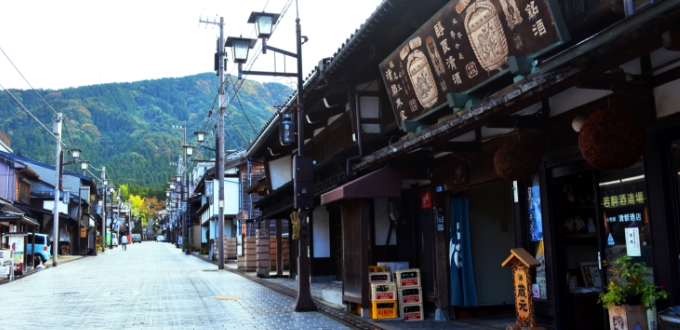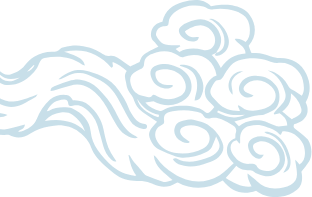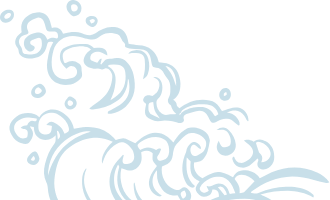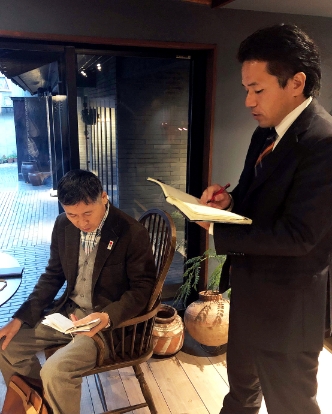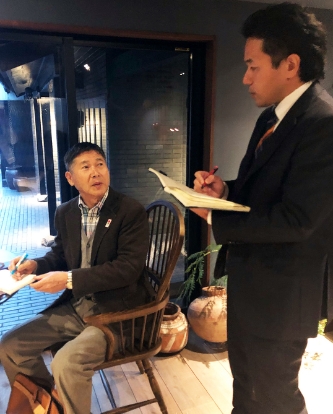OUR JAPAN HERITAGE
| Yuhei Shimada | Woodworker Japan Heritage Working Group Chairman |
|---|---|
 |
|
| Naoki Mitani | Inami Regional Development Association Head Japan Heritage Promotion Council Head |
Laying the Foundation for the Future(Shimada)
Being recognized as a piece of Japan Heritage gives us the opportunity to show the world how amazing Inami is and encourage visitors to come see it for themselves. For me personally, it was an opportunity to reconnect with the community here.
The foundation of any community is its people. If we want our children to take pride and ownership of our community in the future, we first need to set a good example through our own hard work and enthusiasm. I believe it’s our responsibility to be good role models for the next generation, even if we make the occasional misstep.
Earning the title of Japan Heritage has reinvigorated our stagnating community. I can’t express how incredibly thankful I am to everyone involved; I don’t know what would have happened if it weren’t for all of your efforts. I hope we can keep working together to delve even deeper into the unique wonders of Inami and lay the foundation for the town’s future through a strong network of human connections.
Passing the Baton to the Younger Generation(Mitani)
Inami was officially registered as a piece of Japan Heritage in 2018. We hope people will be drawn to Inami by its fascinating story told through both tangible and intangible cultural properties, such as its unique festivals and food.
I’ve worked in City Hall for 40 years and gained a lot of experience in a variety of fields along the way. I feel like I owe it to the town to give back after all it’s done for me, but I can’t help wondering how the younger generation feels about it. Are they happy to see us working to develop and energize our town? That’s why I’ve decided to focus my efforts on supporting the motivated young people of Inami.
Inami has educational facilities, places to work, a hospital, and care facilities - everything that the people, young or old, need to continue living here. And now that it’s recognized as Japan Heritage, the community can reach new cultural heights and experience new, rich exchanges with visitors coming in. While the younger generation takes the reins of the town’s future, I’d like to keep supporting them and cheering them on from the sidelines.
DANCING FLOATS AND
CROWDFUNDING
Reviving the Extraoridnary Odori-yatai
The Inami Hachiman-gu spring festival used to feature not only the men’s majestic lion dance, but also the women’s elegant “odori-yatai” dancing floats. Unfortunately, due to a lack of participants both pulling and dancing on the floats, they were retired in 2008. In 2018, a project was undertaken with the aim to bring the floats back with new Inami wood carving decorations to grace the town once more.
For 10 years, the floats sat bare in storage, but thanks to the months-long efforts of the members of the Inami Wood Carving Cooperative, they have returned in all their decorated glory. Money for the project, which involved purchasing dance lessons, clothes, and accessories, was raised through crowdfunding via the Hometown Tax Donation Program. The fund surpassed its original goal of 1 million yen to reach 1.08 million yen. Novice dancers were taught the dance steps from the basics, new clothes and accessories were bought, and the floats were furnished with lanterns and screens, and other decorations. In spring of 2019, the floats were successfully reintegrated into the festival.
Over the course of their history, the odori-yatai have been retired twice due to fires and a lack of participants, but they always manage to fight their way back. This is not just a revival, but a revolution turning the old into something new, which was made possible through Inami wood carving culture and techniques. The dancing floats are certain to remain an integral part of the spring festival for years to come.
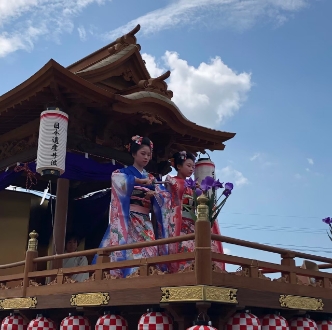
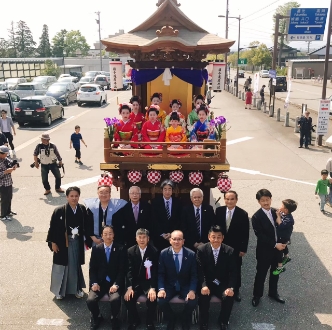
In 2019, the odori-yatai were used in the Inami Hachiman-gu spring festival (Inami Yoiyasa Festival), Inami International Wooden Sculpture Camp, Nanto City Lion Dance Summer Camp, Machinami Art Exhibition, and more.

ABOUT THE (MA)P
PROJECT
Raising New Cultural Creators
Throughout the over 600 years that make up Inami’s history, a number of influential figures stepped up and spearheaded the evolution of the town. One of those people was the temple carver Maekawa. When the Inami Betsuin Zuisenji Temple burned to the ground, he came all the way from Kyoto to teach wood carving techniques to the people of Inami so they could rebuild.
New cultural creators like this could be anyone, anywhere. The (MA)P Project aims to bring potential creators together in an environment where culture can thrive. The project offers assistance in searches for housing and supplemental income, mentorships for specialists starting up new projects, and guidance on how to set up businesses and galleries. The aim is not only to bring creators to Inami, but to give them the resources they need to become the next influential figure in Inami’s history.
The winds of cultural change come from the outside, which is why this project encourages creators come and grow their abilities and influence the people around them, continuing the cycle of cultural change well into Inami’s future.
